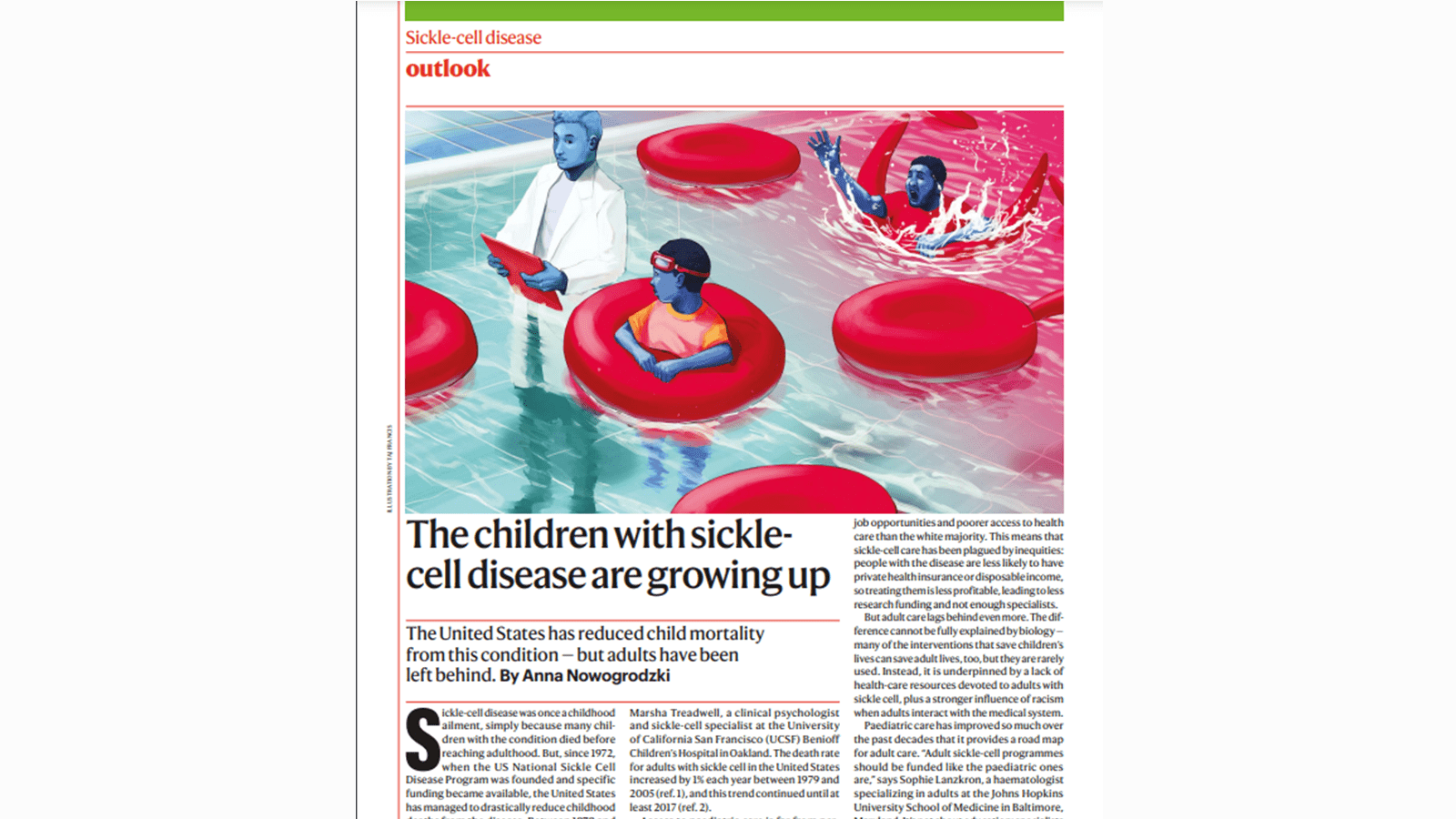Even as sickle cell disease receives more attention, care for adults still lags behind, according to a report in a supplement to Nature sponsored by CSL.
Here’s how one expert put it: “In all the time that researchers have focused on childhood sickle-cell disease, ‘there wasn’t as much attention on the fact that these children become adults,’ said Marsha Treadwell, a clinical psychologist and sickle-cell specialist at the University of California San Francisco (UCSF) Benioff Children’s Hospital in Oakland.”
Doctors and others in the report call for more treatments and more coordinated care for the complex disease, which causes pain crises and poor health for millions of patients. Sickle cell disease gets its name because patients’ red blood cells form in a sickle, or half-moon, shape instead of the usual donut shape. A simplified explanation of the condition is that these malformed red blood cells “get stuck” in blood vessels, but the disease is more complex. The sickle cells and byproducts of the cells quickly break down in the body, causing organ damage and medical crises, such as strokes, even in young children.
Researchers with CSL are investigating potential new treatments for sickle cell disease. In June, CSL’s Dr. Greg Kato, who spent 30 years treating sickle cell patients, gave a presentation about a clinical trial at the Sickle Cell Disease Research and Educational Symposium and scientific meeting in Fort Lauderdale, Florida.
See the full report in the Nature supplement: No adult left behind: bridge the health-care gap for sickle-cell disease



